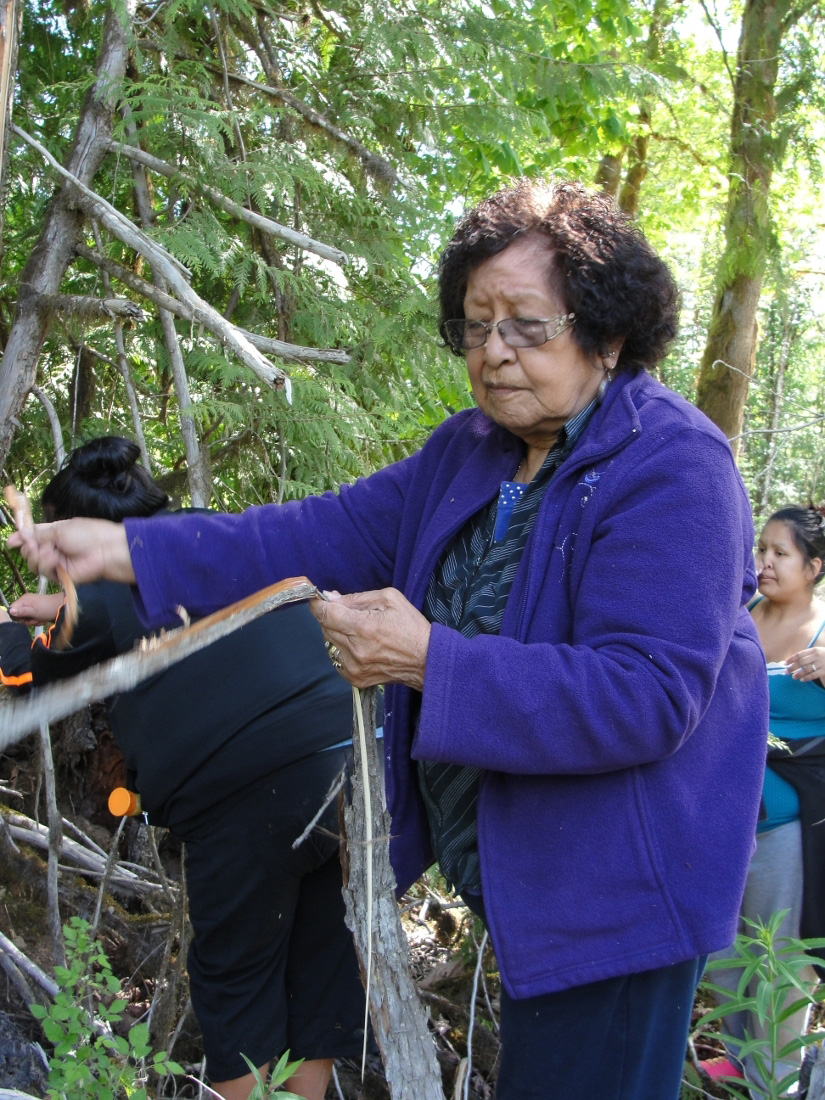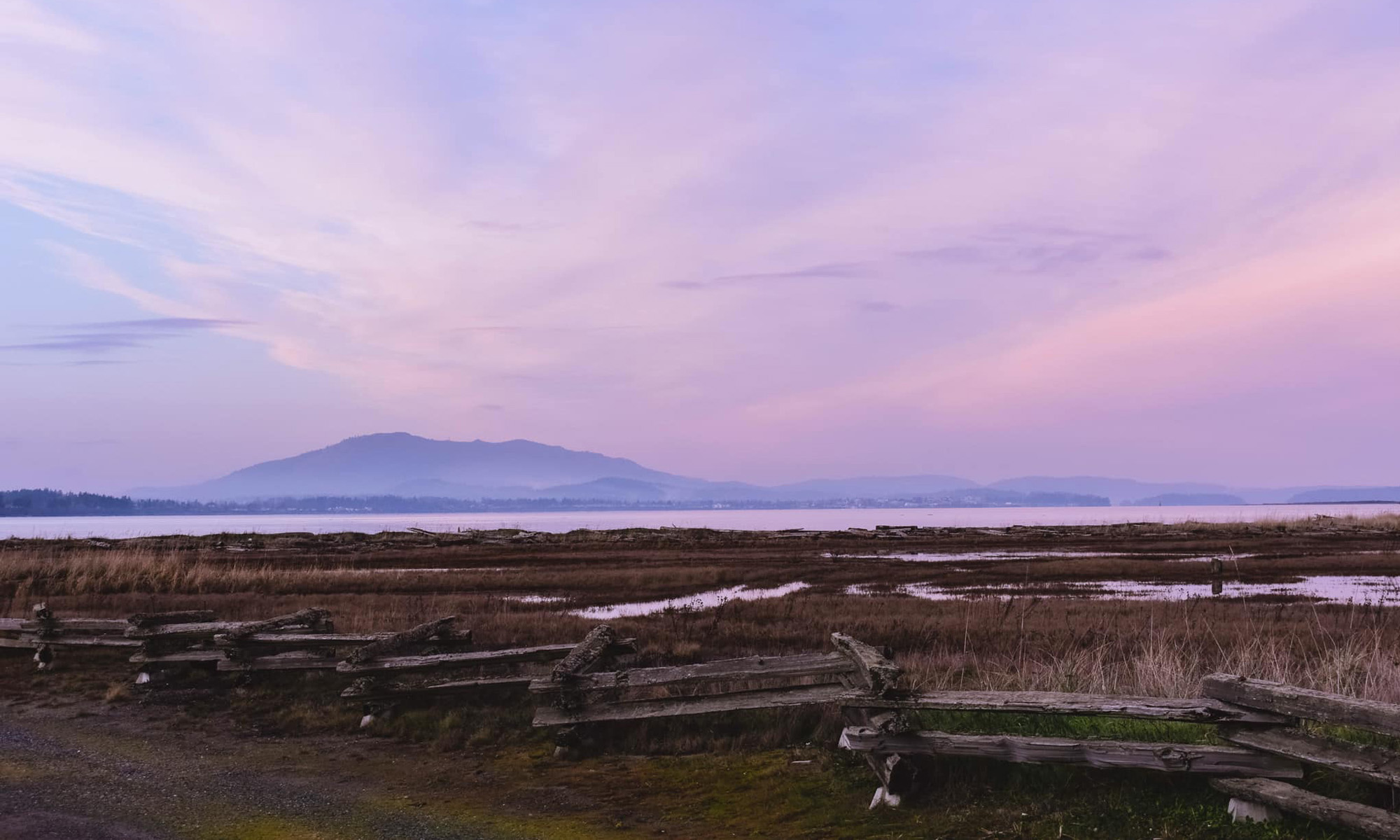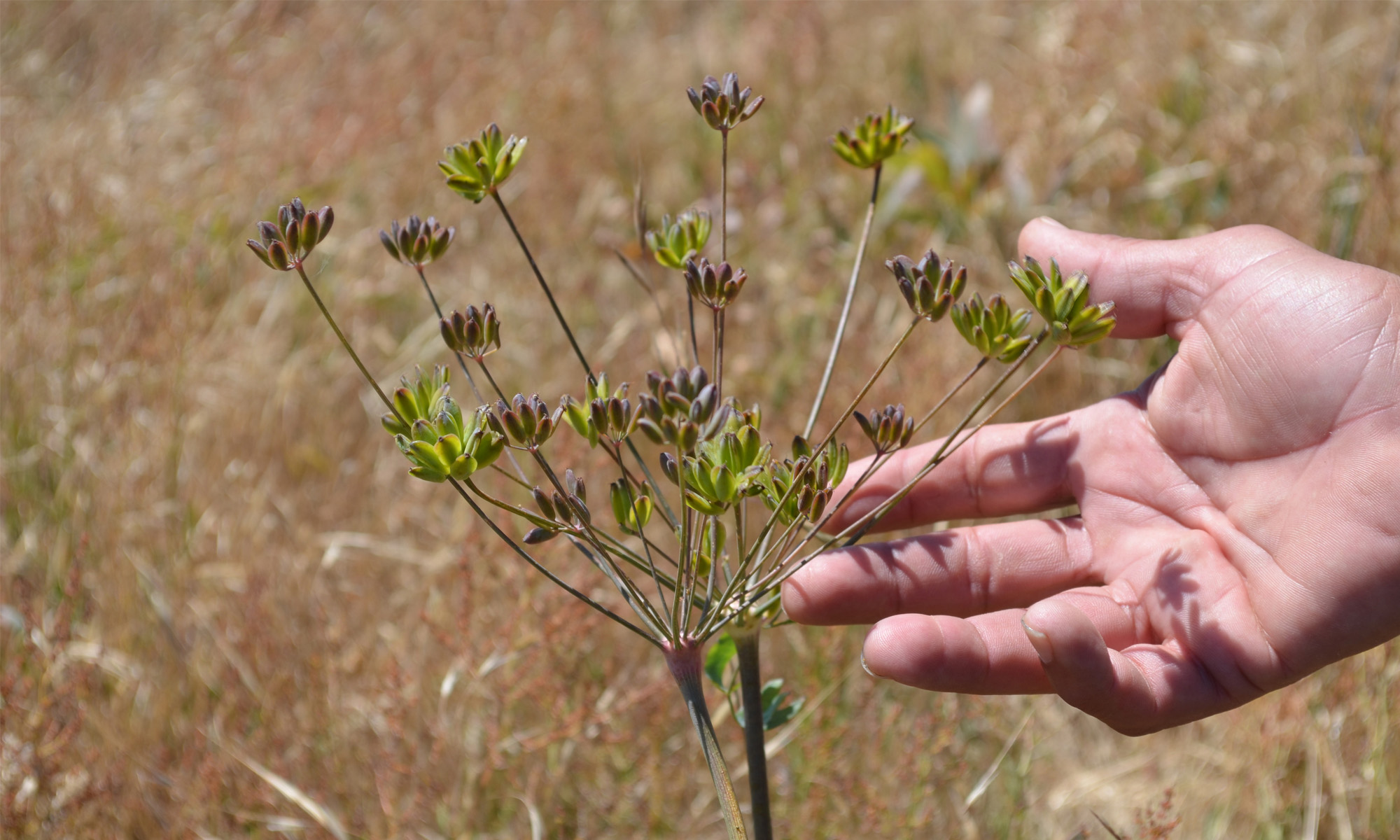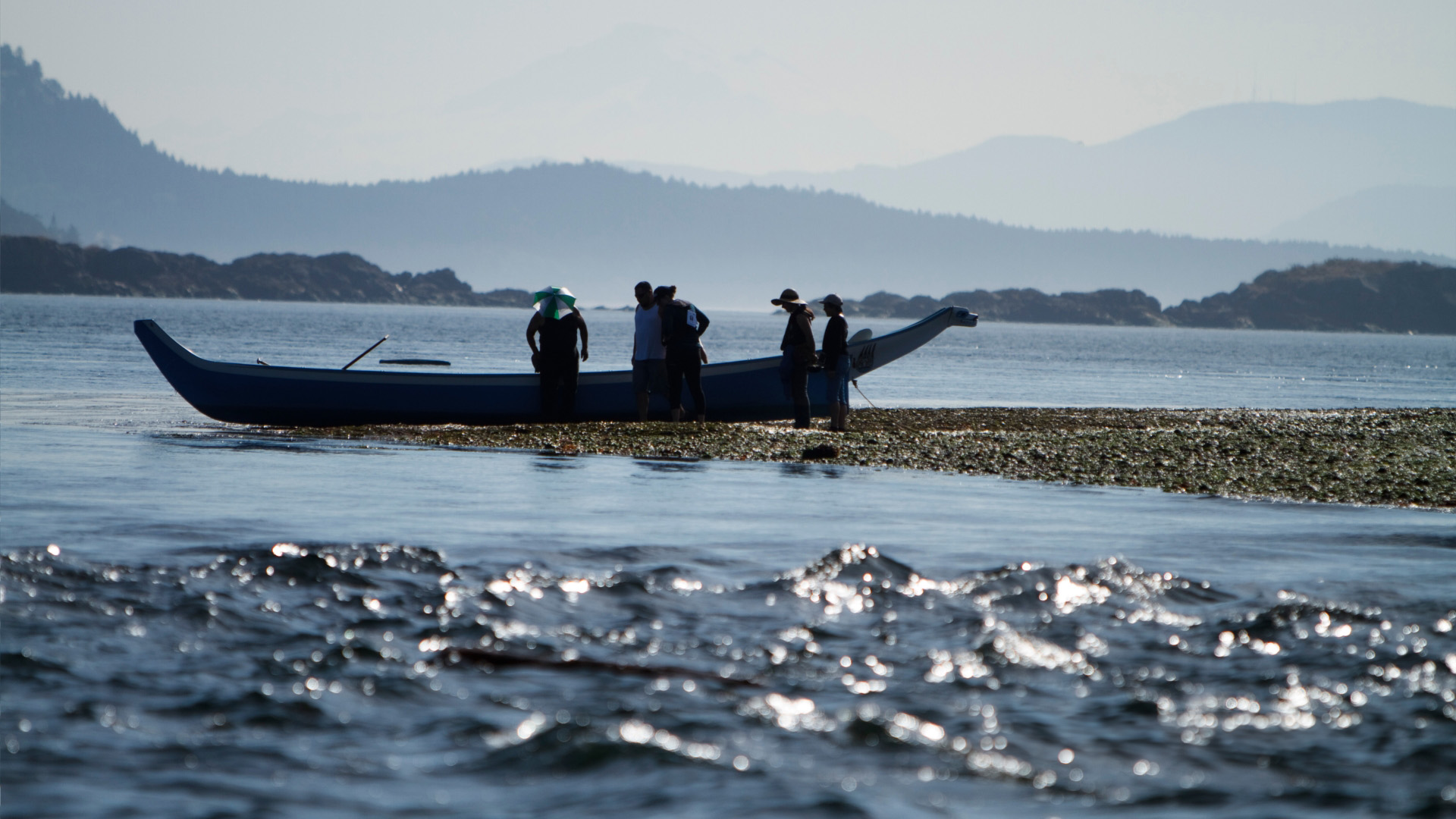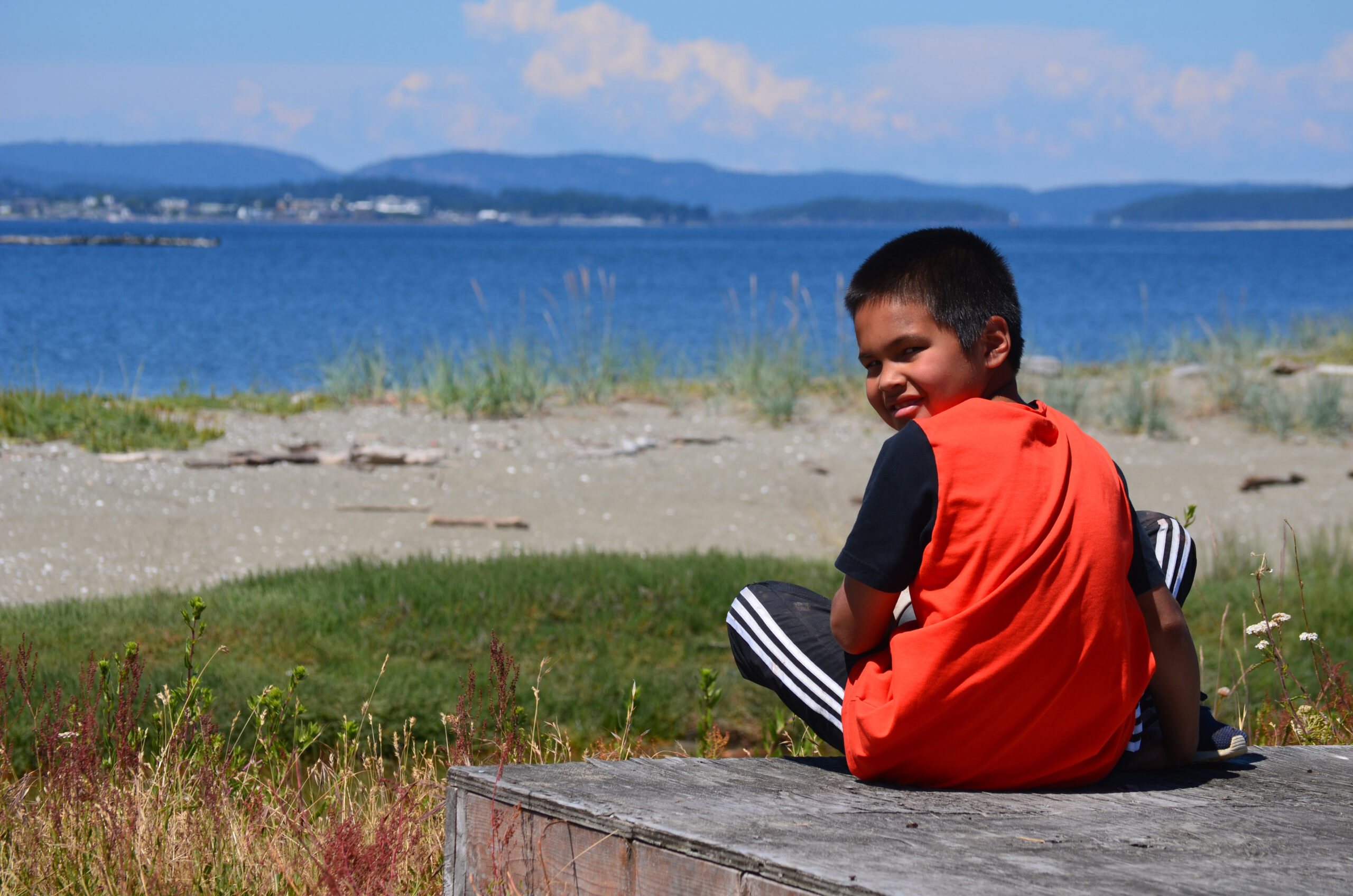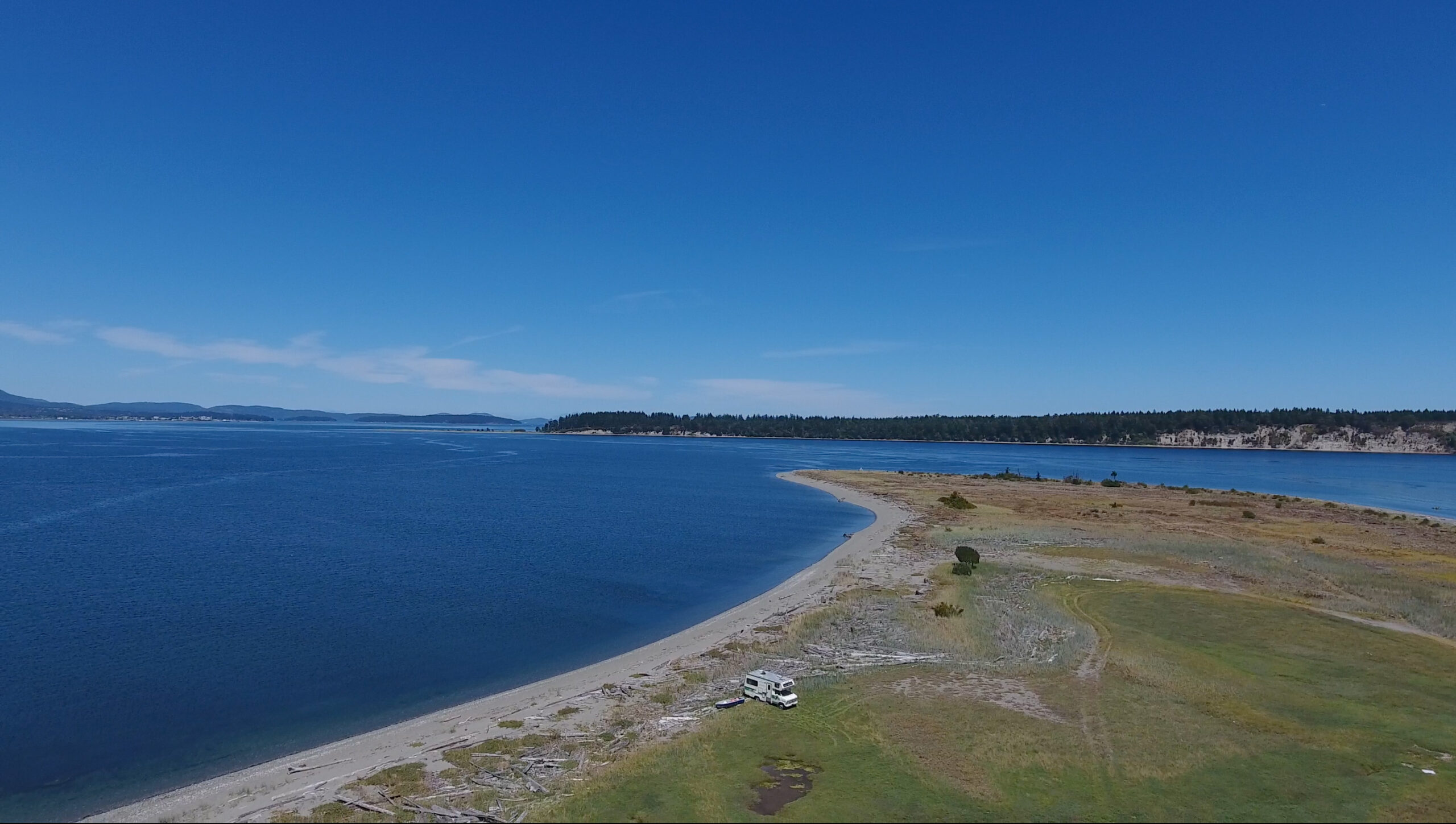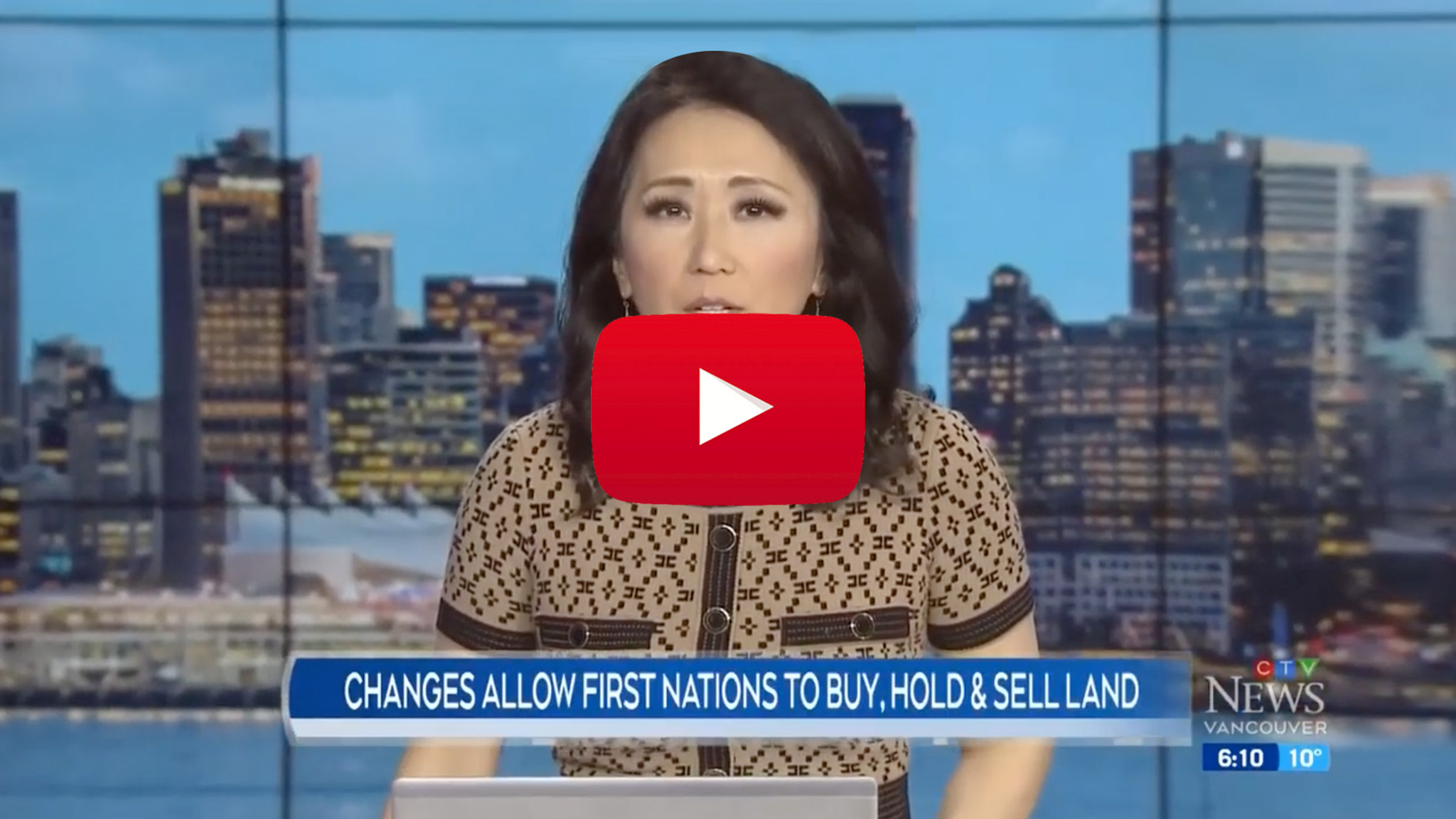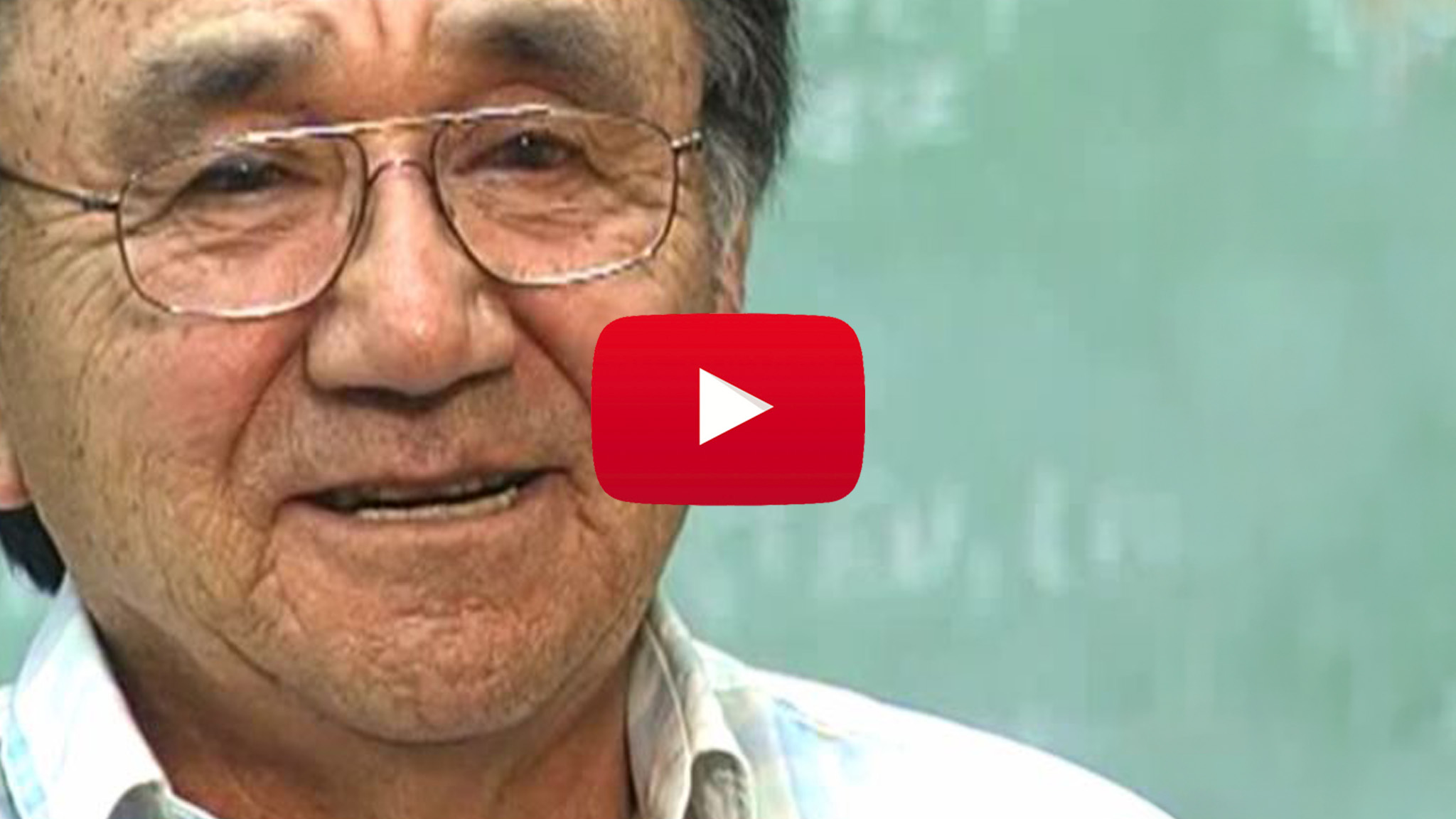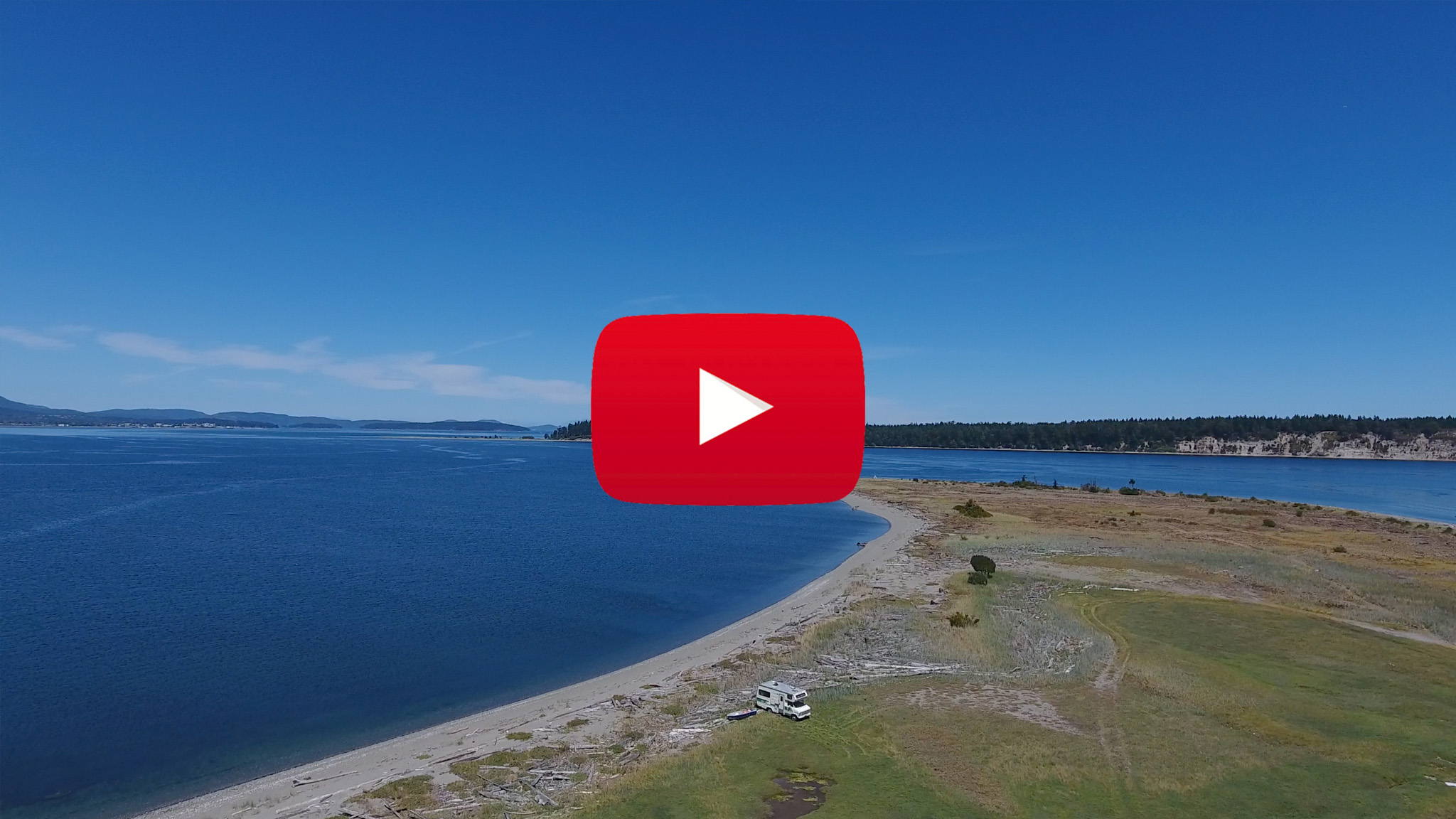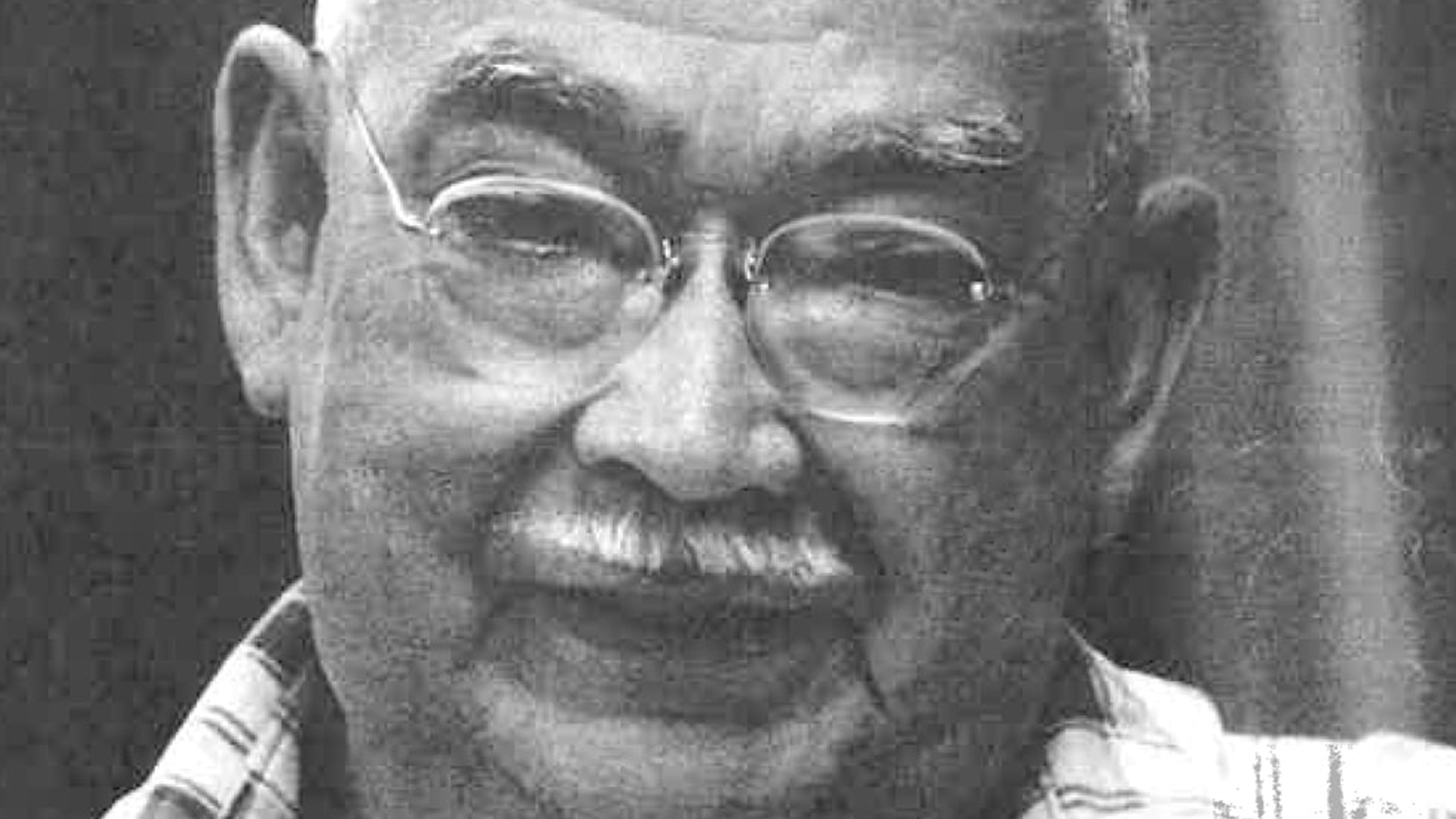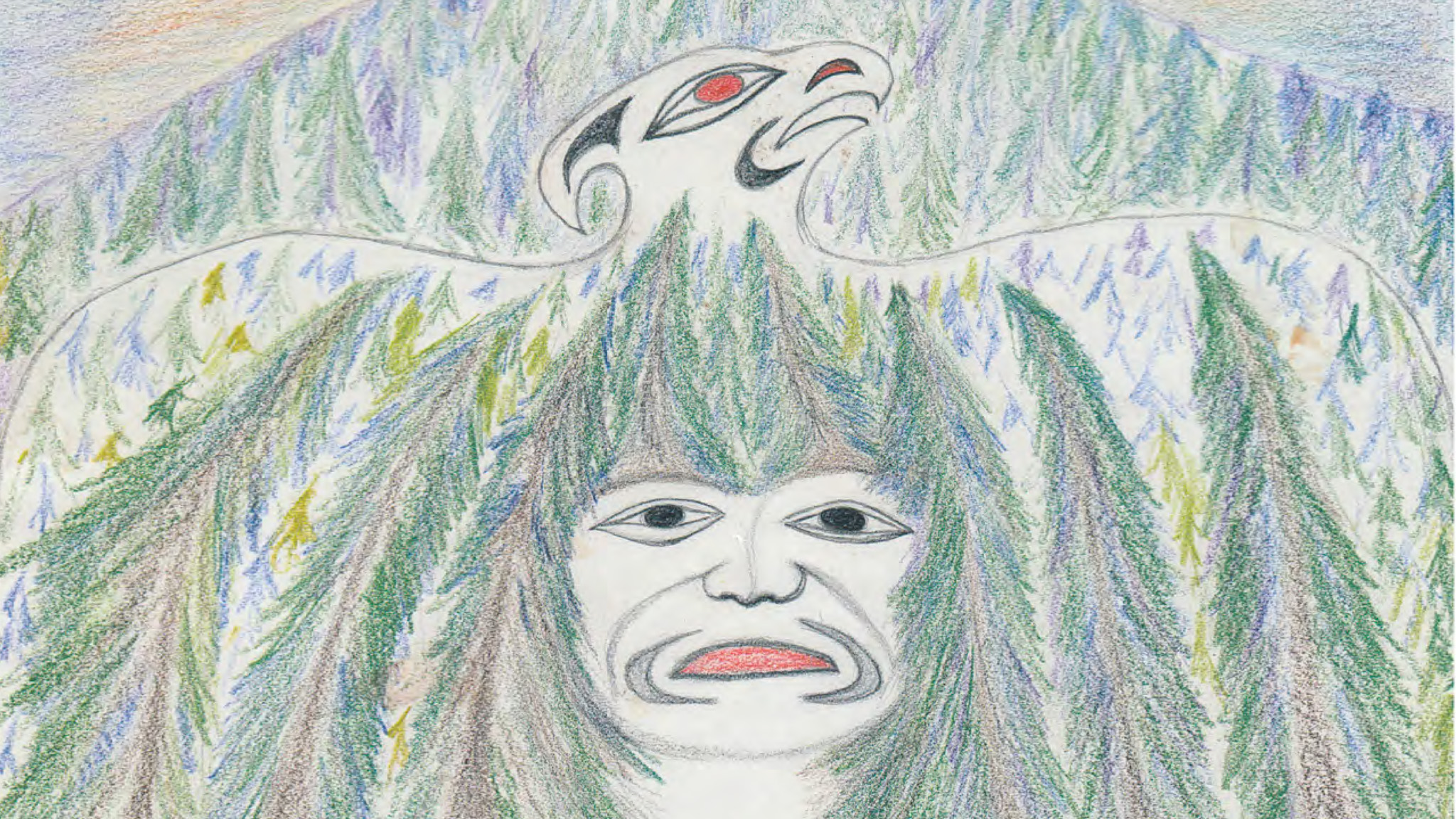LAND BACK MOVEMENT
The Land Back movement in Canada is a grassroots Indigenous-led movement that advocates for the return of Indigenous land to Indigenous peoples. It is rooted in the recognition of Indigenous land rights and seeks to address historical and ongoing injustices stemming from colonization, dispossession, and forced assimilation.
The movement emphasizes the importance of land not only as a vital resource for Indigenous communities but also as a fundamental aspect of Indigenous identity, culture, and self-determination.
Land Back calls for the return of lands, territories, and resources to Indigenous peoples, challenging existing colonial structures and promoting Indigenous stewardship and governance over their ancestral lands.
LAND BACK NEWS & W̱SÁNEĆ TERRITORY
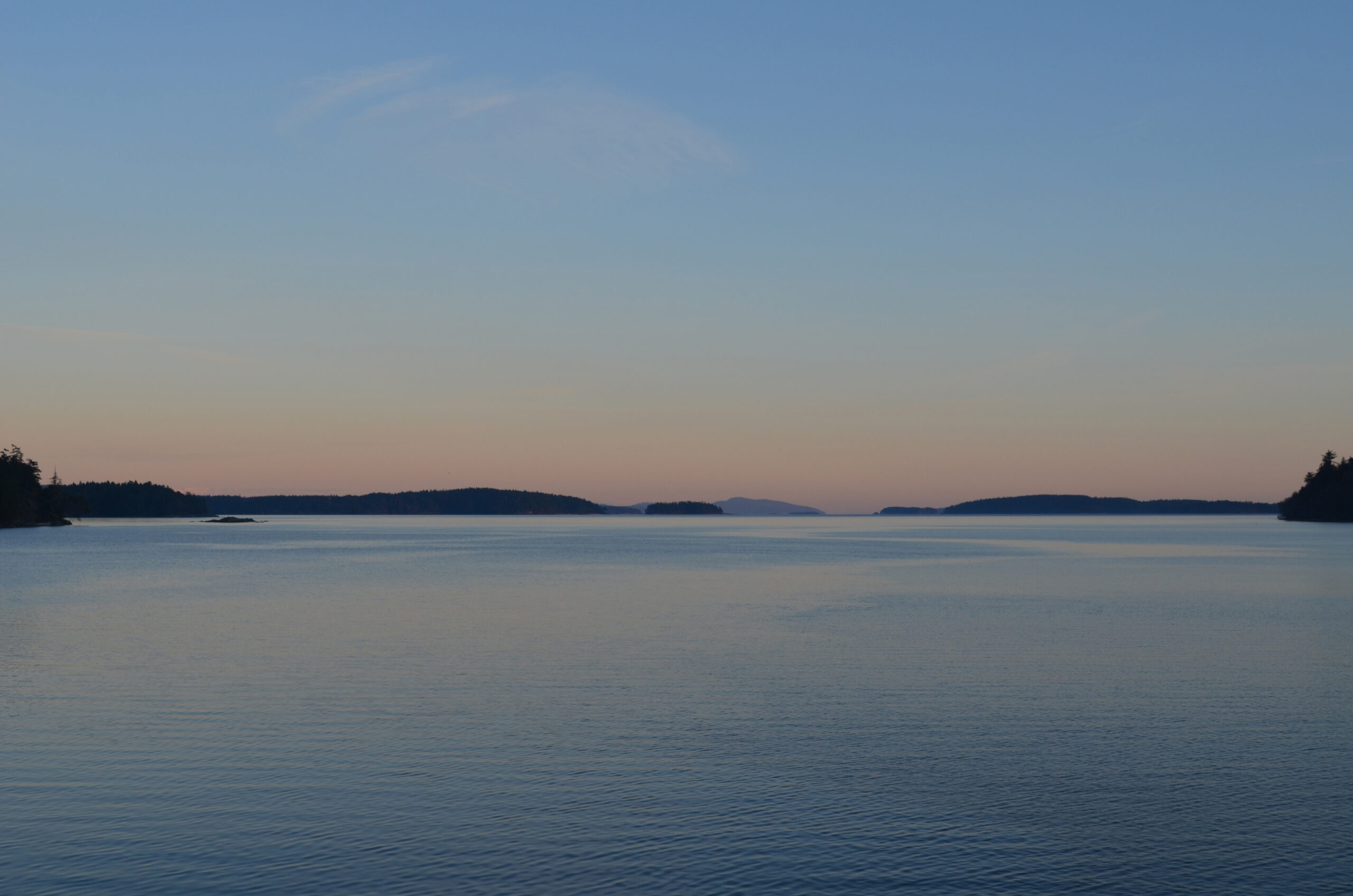
How the Mountains were created
The Creator paddled over to the east side of the SȾÁUTW̱ village and found some shiny black stones on the beach. He threw one inland, and a mountain grew out of the stone.
He filled his basket with more shiny black stones and went to the top of this mountain. And, then people followed him up to that mountain and there’s a rock face cliff on the mountain where they went. Once there, he threw more shiny stones around him and that’s how the other mountains came to be.
And, then when he was finished with that work, and then he grabbed some of our people, one by one, our ancestors, and he threw them out into the straits.
And, as he tossed them out into the straits he said “QENT E TŦEN SĆÁLEĆE, QENT E TŦEN SĆÁLEĆE, QENT E TŦEN SĆÁLEĆE, QENT E TŦEN SĆÁLEĆE”: “Look after your relatives, look after your relatives, look after your relatives.” And, as he threw them out into the straits, and as they landed into the straits, and then they became those islands that are still there today. What they call the Gulf and San Juan Islands.
Those were our original ancestors that got changed by the Creator.
These directions to look after our relatives are our laws. These are the kinds of things we speak about with respect to the Natural Laws. For us, a belief and a law are the same.
The names we have for different parts of the natural world are in relative terms. For instance, the SENĆOŦEN word for Salmon is older cousin, while the SENĆOŦEN word for deer is grandson. The word for Island means “Relative of The Deep.” Our word for Rock, Boulder and Mountain means “My gift”. Our word for Earth means “Wish for the People.”
SȾÁUTW̱ First Nation is a Coast Salish Nation and one of five villages that constitute the W̱SÁNEĆ peoples. The W̱SÁNEC peoples originated in SȾÁUTW̱ — as told in our creation stories, it was from the SȾÁUTW̱ village that the Creator, XÁLS, threw the first stone to create ȽÁU,WELṈEW̱ (Mount Newton).
As Saltwater People, our way of life — in our SENĆOŦEN language, our ŚXENÁNS — is intimately connected to the Salish Sea. Since time immemorial, SȾÁUTW̱ has observed an annual round, travelling throughout SȾÁUTW̱ territory to various villages and harvesting sites, carefully managing resources to ensure abundance for both present and future generations. As SȾÁUTW̱ peoples, we have a sacred legal obligation to both our ancestors and future generations to protect and care for this territory, in accordance with our laws.
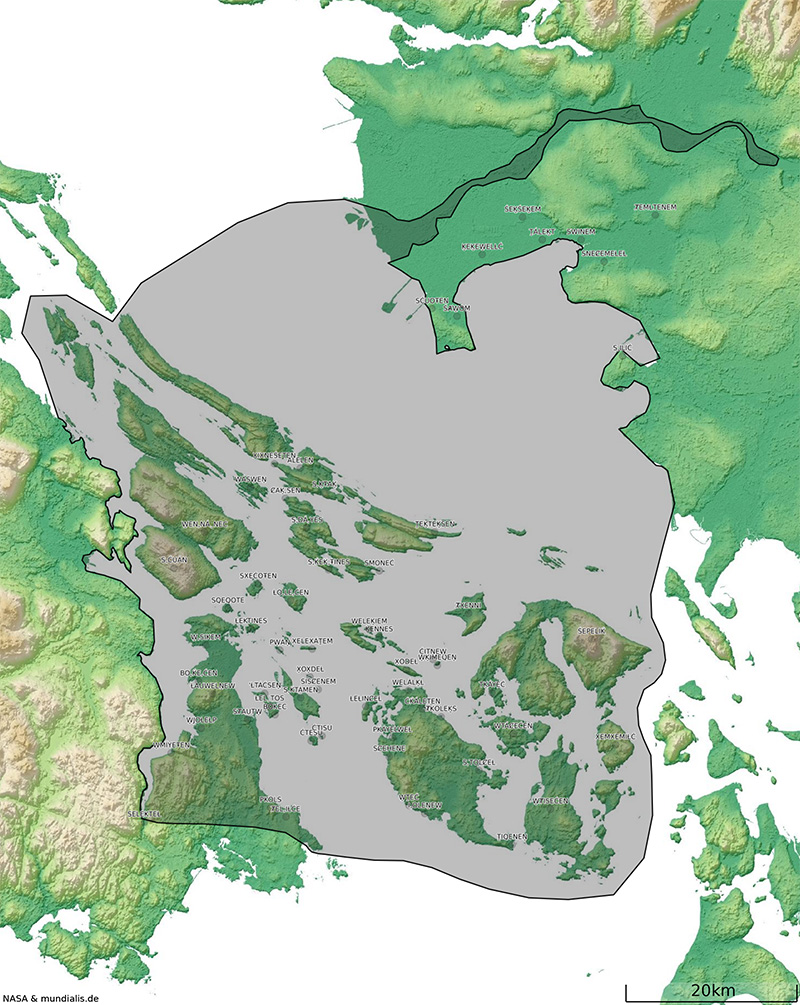
SȾÁUTW̱ TERRITORY
SȾÁUTW̱ territory extends from southern Vancouver Island to mainland British Columbia — in particular, regions around the south arm of the Fraser River and Boundary Bay — and includes all the islands in between. These islands, known today as the Gulf and San Juan Islands, are our ancestors who were cast out into to the straits by the Creator, XÁLS, and who we are obligated by law to take care of.
SȾÁUTW̱ has inherent rights, which include both Aboriginal and Treaty Rights, including Aboriginal title, throughout SȾÁUTW̱ territory. Members of SȾÁUTW̱ are the descendants of signatories to the North Saanich Treaty and the South Saanich Treaty, both of which were entered into with Governor James Douglas in 1852 (the “Douglas Treaties”). The Douglas Treaties promised the protection of several inherent rights, including the right to our village sites and enclosed fields, and the right to hunt and carry on our fisheries as formerly.
The repercussions of breaching the Douglas Treaties at the onset continue to reverberate through our traditional terrestrial and marine territory today.
Land reductions and omissions of SȾÁUTW̱ peoples’ history of achievement and thriving in freedom, living in kincentric ecology, have met with aggressive efforts to displace, assimilate, and colonize SȾÁUTW̱ peoples. In the face of such oppression, SȾÁUTW̱ ’s youth population continues to grow, driving hopes of revitalization of language, history, cultural teachings, and opportunities.
Today, many of our members live on a small portion of SȾÁUTW̱ territory, known as East Saanich Indian Reserve No. 2, or the SȾÁUTW̱ First Nation main village, located on the eastern shore of the Saanich Peninsula, about 15 minutes north of the City of Victoria. SȾÁUTW̱ also has reserves on W̱EN,NÁ,NEĆ (Salt Spring Island), SELE₭TEȽ (Goldstream), S,DÁ,YES (Pender Island), ṮEḴTEḴSEN (Saturna Island), and X̱OX̱DEȽ (Mandarte Island).
STEWARDS OF THE LAND
As members of the SȾÁUTW̱ First Nation, we are committed to being good stewards of our land through the development of several key initiatives: our Indigenous Protected and Conserved Area (IPCA), Marine Use Law, and a Consultation Protocol.
Our IPCA allows us to protect our traditional territories by emphasizing sustainable practices and integrating indigenous knowledge to maintain biodiversity.
The Marine Use Law helps us regulate the use of marine resources, ensuring they align with our community’s long-term environmental goals.
Additionally, our Consultation Protocol establishes a clear framework for engaging with external parties, ensuring any development or use of our land respects our rights and environmental priorities.
Together, these initiatives are crucial in protecting our ancestral lands and waters and underline our dedication to environmental conservation and sustainable development.
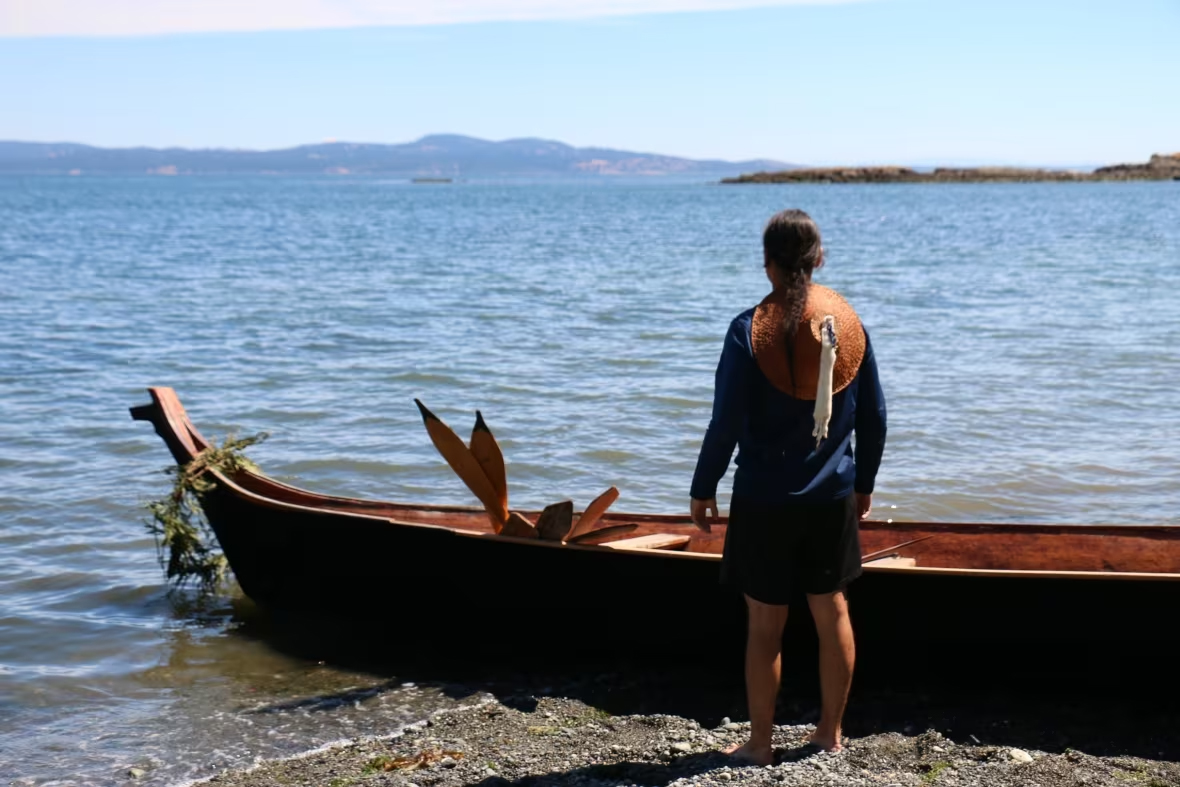
Learn more about our land stewardship efforts:
IPCA – Indigenous Protected Conservation Areas
Indigenous Protected and Conserved Areas (IPCAs) are territories and natural areas designated for conservation that are led and managed by Indigenous peoples. These areas reflect the Indigenous communities’ traditional knowledge, cultural practices, and legal systems. The primary aim of IPCAs is not only to safeguard the biodiversity and ecological integrity of these lands but also to maintain and enhance Indigenous ways of life and spiritual connections to the land.
IPCAs are increasingly recognized as a vital part of global conservation efforts because they contribute to the preservation of extensive areas of relatively undisturbed natural landscapes and the diverse species that inhabit them.
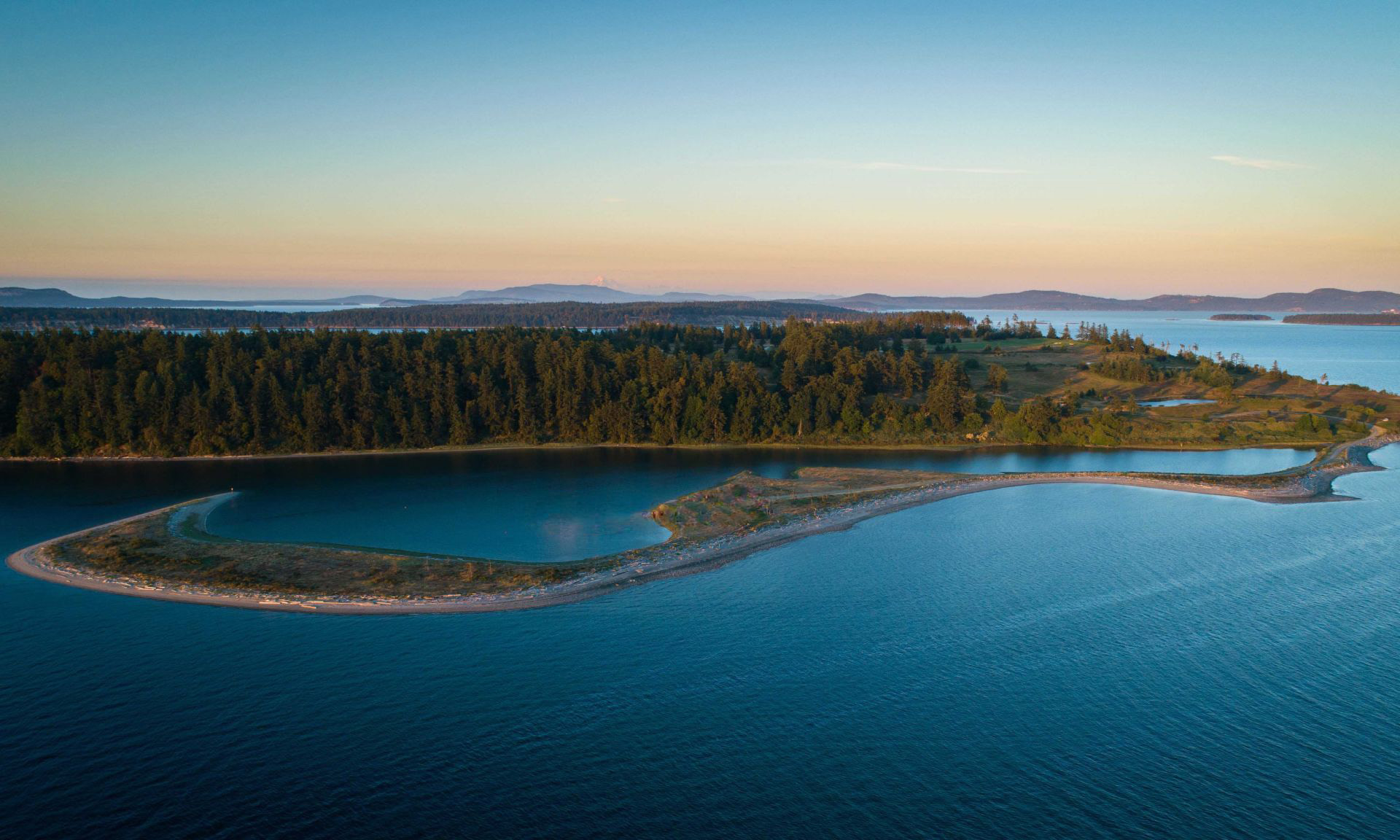
QEN,T Marine Protected Area Declaration
We, the leadership, and saltwater people of the SȾÁUTW̱ First Nation, being the holders of Douglas Treaty and Aboriginal rights and title in our unceded traditional lands, waters, and skies, do hereby declare the QEN,T Marine Protected Area (MPA), as shown in the attached map.
This Declaration is made in accordance with our inherent rights and our laws, customs, traditions, values, principles, and inherent stewardship responsibilities, including the responsibility to follow the SȾÁUTW̱ First Nation Marine Use Law.
This Declaration is made in accordance with our Douglas Treaty and Aboriginal rights, which are recognized and affirmed by section 35 of the Constitution Act, 1982 and reinforced by the United Nations Declaration on the Rights of Indigenous Peoples.
This Declaration is made in recognition of the many spiritual and cultural places, medicine and gathering places, fishing stations, village sites and burial sites within the QEN,T MPA, to which SȾÁUTW̱ First Nation has a sacred and enduring connection.
This Declaration is made to uphold our ancestral responsibilities, to prevent further infringement of our right to carry on our fisheries as formerly, to reverse cultural erosion and the trend of declining and mismanaged fisheries, and to provide sustainable and resilient fisheries for future generations.
This Declaration confirms our commitment to restoring and maintaining the ecological health and the natural resources within the MPA for sustainable cultural, traditional, and economic uses for the benefit of the Coast Salish people and the communities with whom we have ongoing, respectful, and developing relationships.
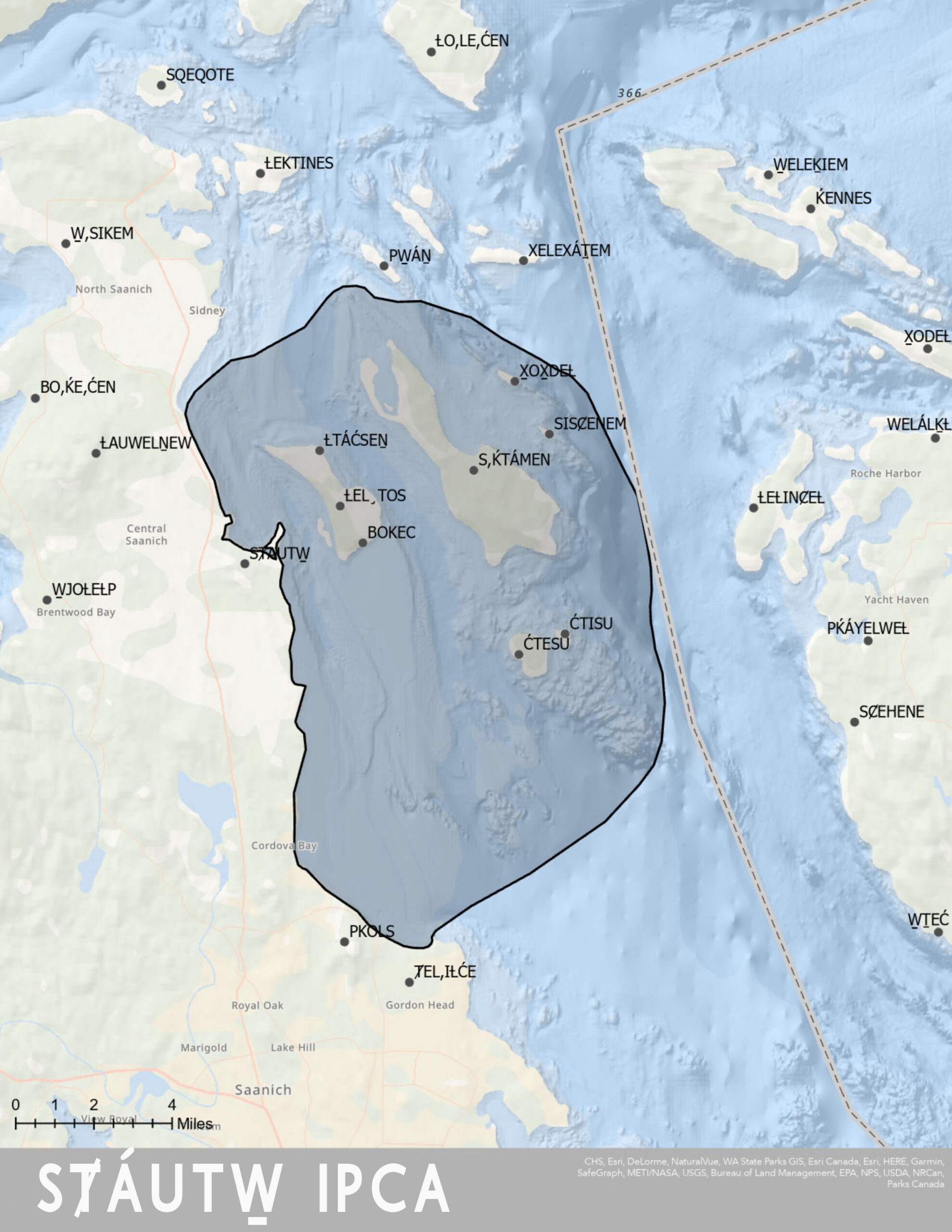
Marine Use Law
SȾÁUTW̱ First Nation asserts its inherent rights to self-government, as recognized in the Douglas Treaty (1850), Section 35 of the Canadian Constitution Act, 1982, and various articles of the United Nations Declaration on the Rights of Indigenous Peoples (UNDRIP). These rights include managing our marine habitat and fisheries within our territory.
Key Points:
- Inherent Rights and Self-Government: SȾÁUTW̱ First Nation has inherent rights to self-governance, which are legally recognized and protected by historical treaties and international declarations.
- Jurisdiction over Marine Habitat: SȾÁUTW̱ First Nation has the authority to manage marine habitats and operations within our territory, based on their historical rights and affirmed by legal cases and international law.
- Land Code and Framework Agreement: SȾÁUTW̱ First Nation’s Land Code, effective since May 29, 2007, empowers them to enact rules, procedures, and policies for managing our lands. This authority is further supported by the Framework Agreement on First Nation Land Management.
- Marine Use Law No. 2023-01: The Council of SȾÁUTW̱ First Nation has enacted a new Marine Use Law to formalize our management and jurisdiction over marine use in our territory, reflecting our right to self-governance and environmental stewardship.
These points highlight SȾÁUTW̱ ‘s commitment to exercising our rights and responsibilities over our lands and resources in accordance with our traditions, treaties, and modern legal frameworks.
COMMON QUESTIONS
The primary goal of the Land Back movement is the return of land and resources to Indigenous communities. This includes both legal recognition of Indigenous land rights and the physical return of lands currently held by governments or private entities. Additionally, the movement aims to address systemic issues such as poverty, lack of access to resources, and the preservation of Indigenous languages and cultures. Ultimately, it seeks to empower Indigenous communities to govern their own territories and determine their own futures.
The Land Back movement encompasses a range of actions, including legal challenges, direct action protests, advocacy campaigns, and community-led initiatives. These actions may involve reclaiming traditional territories, asserting jurisdiction over natural resources, and demanding changes to government policies. Some communities are negotiating land agreements or pursuing land claims through legal channels, while others are engaging in grassroots organizing to raise awareness and build solidarity. The movement is diverse and decentralized, with actions tailored to the specific needs and circumstances of each Indigenous community.
Historically, Indigenous communities have been forcibly removed from their traditional lands, often through government policies such as the Indian Act, residential schools, and the reserve system.
In British Columbia, there are several treaties and agreements between Indigenous peoples and the Canadian government. The effectiveness of these treaties has often led to unresolved disputes and grievances. Ongoing dialogue, reconciliation efforts, and collaborative decision-making are essential to addressing these challenges and working towards a more just and equitable future for Indigenous peoples in British Columbia.
Past, Present and Future of the Land Back Movement
The David Suzuki Foundation has created informative videos describing the past, present and future of the land back movement and how land governance in Canada must change to recognize and uphold Indigenous rights and responsibilities, and to restore nature’s once abundant ecosystems.
Visit the David Suzuki Foundation’s website to learn more about their views on this movement.
